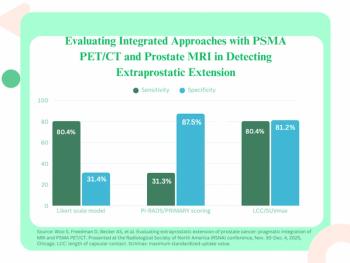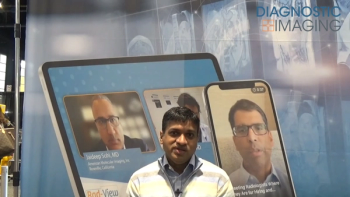
Podcast: Implementing a Hybrid PET/MR System
Pamela Woodard, MD, of the Mallinckrodt Institute of Radiology at Washington University School of Medicine in St. Louis, discusses the challenges and benefits of being an early adopter of this technology.
[[{"type":"media","view_mode":"media_crop","fid":"8216","attributes":{"alt":"Siemens Biograph mMR PET/MR","class":"media-image media-image-left","id":"media_crop_4872934844629","media_crop_h":"0","media_crop_image_style":"-1","media_crop_instance":"217","media_crop_rotate":"0","media_crop_scale_h":"0","media_crop_scale_w":"0","media_crop_w":"0","media_crop_x":"0","media_crop_y":"0","style":"margin: 5px; float: left;","title":" ","typeof":"foaf:Image"}}]]Pioneering a new imaging technology is far more complicated than plugging it in and scanning patients. At the Mallinckrodt Institute of Radiology, Washington University School of Medicine in St. Louis, implementing the Siemens Biograph mMR hybrid
"It's a very new piece of equipment," said Pamela Woodard, MD, of the Center for Clinical Imaging Research (CCIR), Mallinckrodt Institute of Radiology, Washington University School of Medicine. "It's not like a CT scanner that everyone has been using for 35 years and you just start scanning."
Washington University School of Medicine is only the third site in the U.S. to have this equipment, with two other sites set to come online soon. Siemens
[[{"type":"media","view_mode":"media_crop","fid":"11970","attributes":{"alt":"Pamela Woodward","class":"media-image","id":"media_crop_590670178982","media_crop_h":"0","media_crop_image_style":"-1","media_crop_instance":"216","media_crop_rotate":"0","media_crop_scale_h":"0","media_crop_scale_w":"0","media_crop_w":"0","media_crop_x":"0","media_crop_y":"0","title":" ","typeof":"foaf:Image"}}]]And despite the start-up challenges, the lower dose and the simultaneous scans provide some major benefits for patients, according to Woodard. In this podcast, Woodard explains how this technology is being used, why her institution became an early adopter, and what they've learned so far.
Newsletter
Stay at the forefront of radiology with the Diagnostic Imaging newsletter, delivering the latest news, clinical insights, and imaging advancements for today’s radiologists.



























